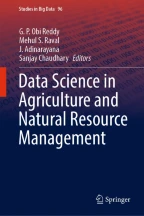
Technology is playing a vital role in bringing about transformational changes and progress in the agricultural sector. With the advent of the Internet of Things (IoT), Remote Sensing, Global Positioning System (GPS), Aerial photography, it has become much easier to monitor crop health, identify in-season nutrient deficiencies, and other issues causing crop stress and reduced yield. Precision agriculture is an information and technology-based system that uses various sources of data such as soil, crop, pest, humidity, yield, nutrients, temperature, moisture for sustainability, optimum profitability, and protection of the environment. Precision Farming helps to better understand the condition of the crops via considering the environmental and economic considerations with the help of remotely sensed data and prevent crop damage by being proactive in the required time frame by applying the right amount of pesticide, irrigation water, and nutrients. The typical components of Precision Farming include background data, record-keeping systems, data analysis, and decision-making process, specialized implementation equipment, and evaluation and revision. Significant benefits of precision agriculture include field scouting, precise application of nutrients in environmentally sensitive areas, detailed soil analysis, variable rate irrigation, etc. This chapter broadly covers various components of precision-based farming and how the underlying technologies are integrated to give a predictive analysis of yield production, sustainable irrigation solutions, crop disease management, and weed identification.
This is a preview of subscription content, log in via an institution to check access.